MQTT Broker:使用 EMQX
EMQX 开源版
EMQX Ubuntu 直接安装
https://www.emqx.com/zh/downloads-and-install/enterprise?os=Ubuntu
选择 Ubuntu ,选择 版本,选择 Ubuntu 的版本,粘贴代码执行
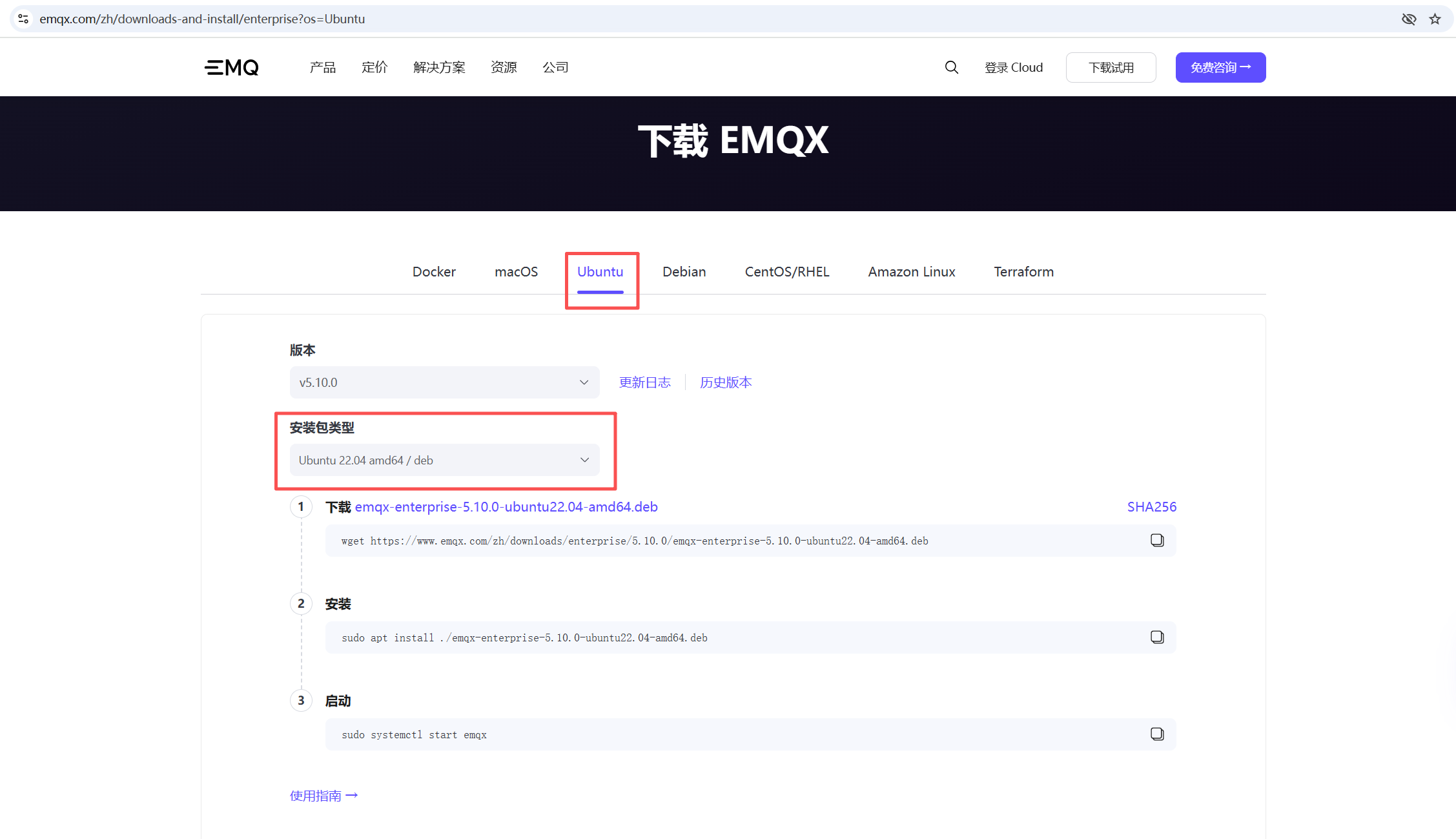
启动 EMQX
参考:使用指南
🟢 启动 EMQX
sudo systemctl start emqx
🟢 停止 EMQX
emqx stop
🟢 卸载 EMQX Broker
DEB 包:
sudo apt remove --purge emqx
查看状态
sudo systemctl status emqx
EMQX 使用 Docker 安装
docker run -d \
--name emqx \
--restart=unless-stopped \
-p 1883:1883 \
-p 8083:8083 \
-p 8084:8084 \
-p 8883:8883 \
-p 18083:18083 \
emqx/emqx:5.7.0
测试连接
端口
服务器防火墙放开端口:18083、1883 等
- MQTT 连接端口: 1883 等
- Web 管理端口:18083
Web 管理面板
http://localhost:18083/
默认的
账号:admin
密码:public
添加其他 MQTT 连接用户
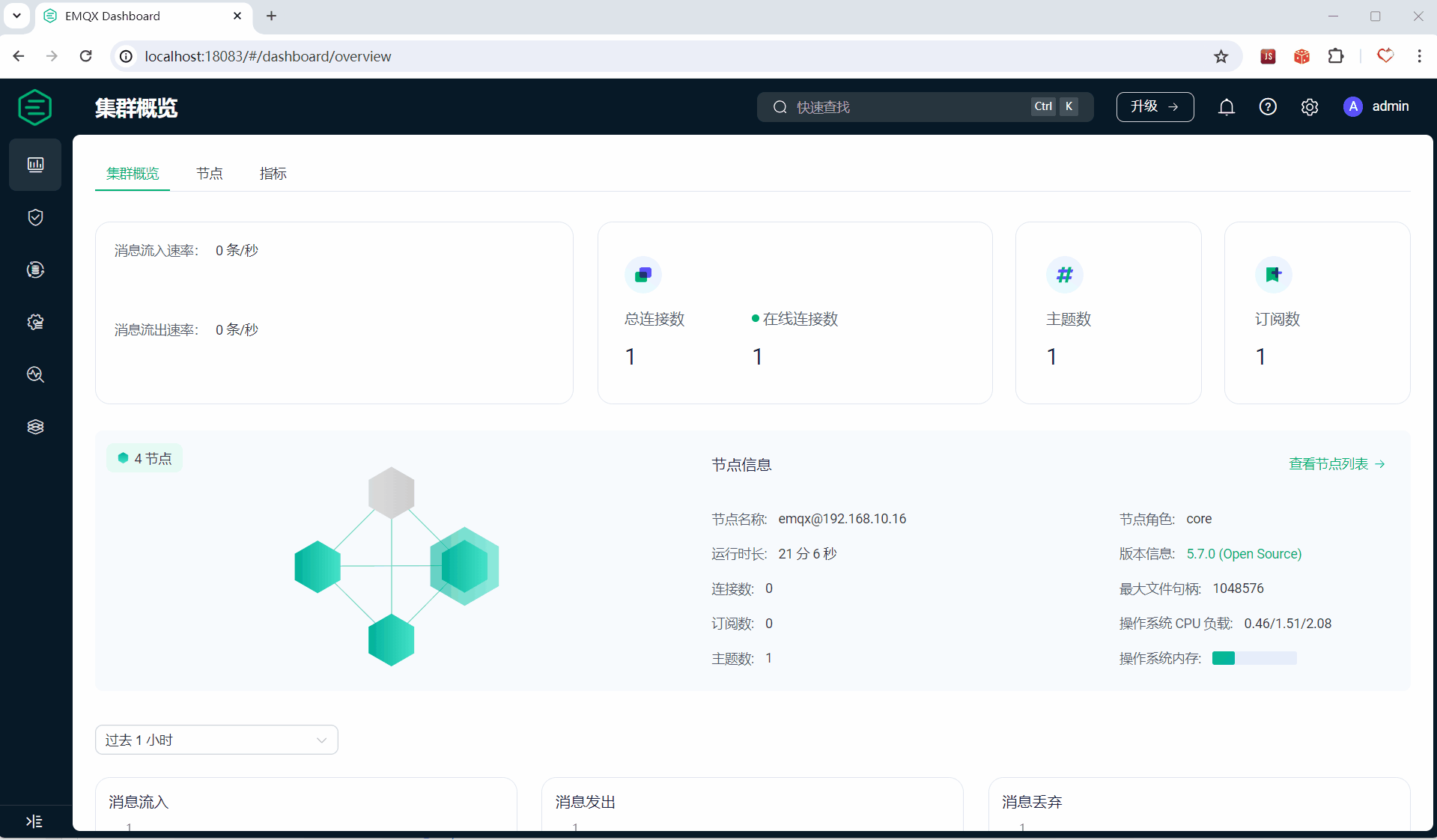
从配置文件中可以获取
dashboard {
listeners.http {
bind = 18083
}
default_username = "admin"
default_password = "public"
}
提示修改密码
设置中文
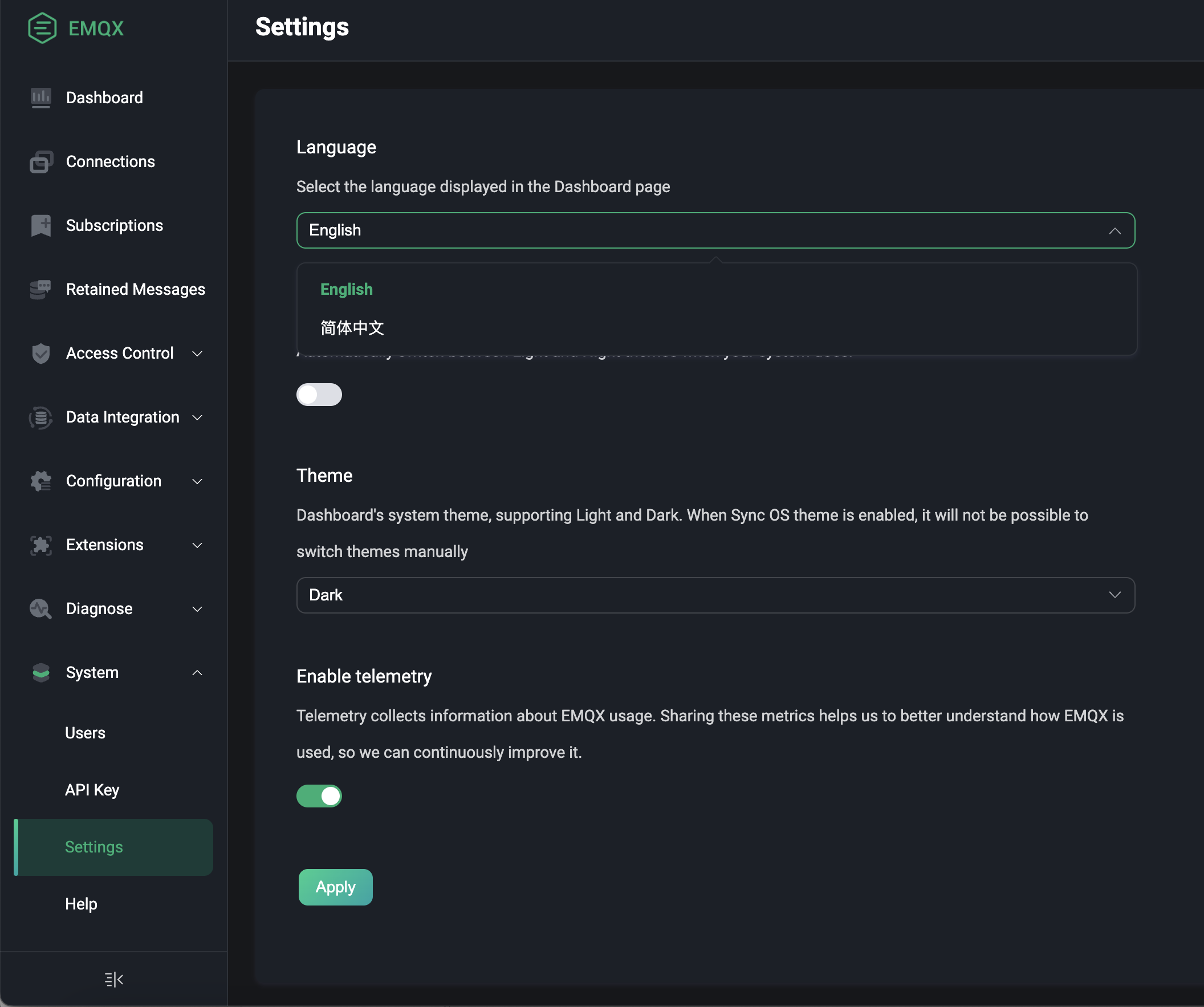
查看连接
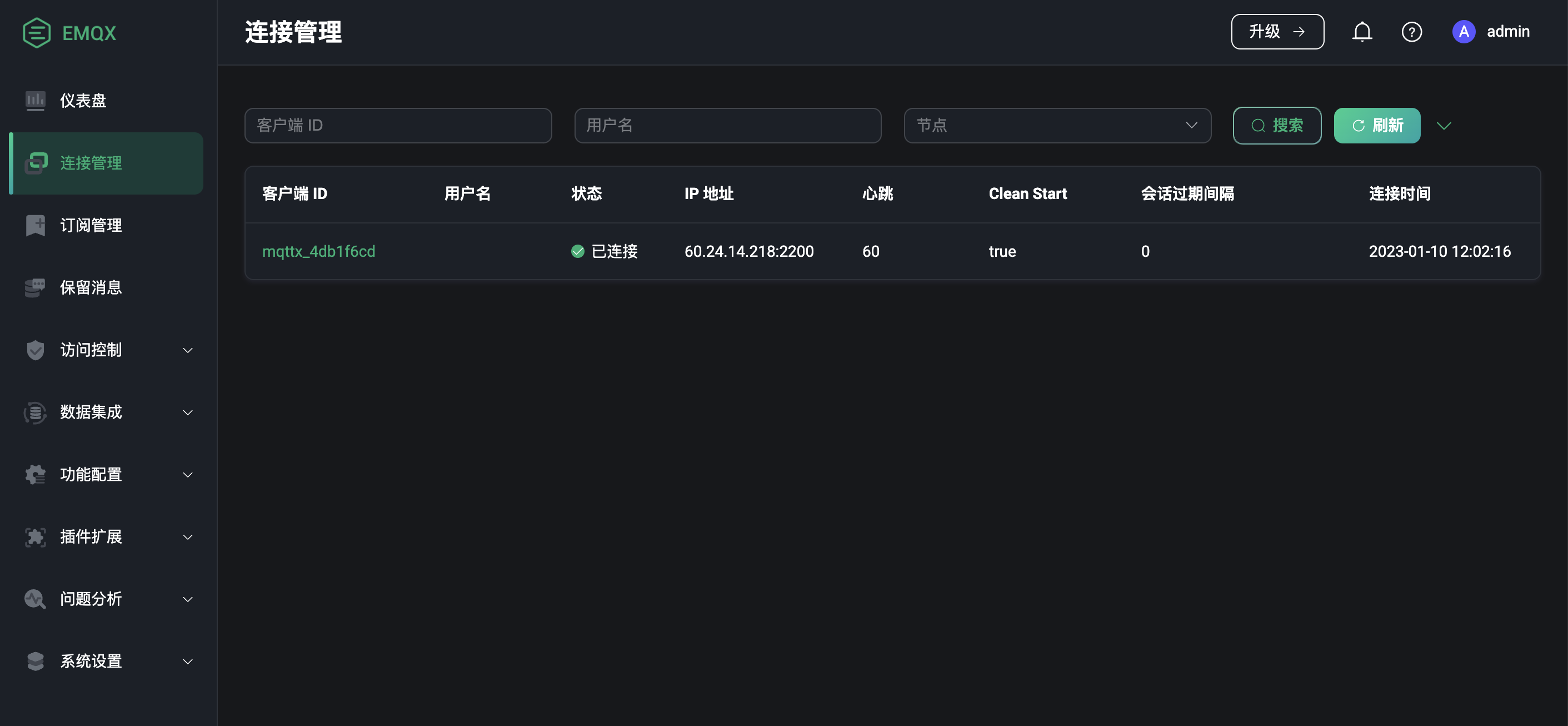
MQTT 连接
MQTT 匿名连接
127.0.0.1
1883
配置认证
找到认证设置页面,选择用户名密码的认证方式。
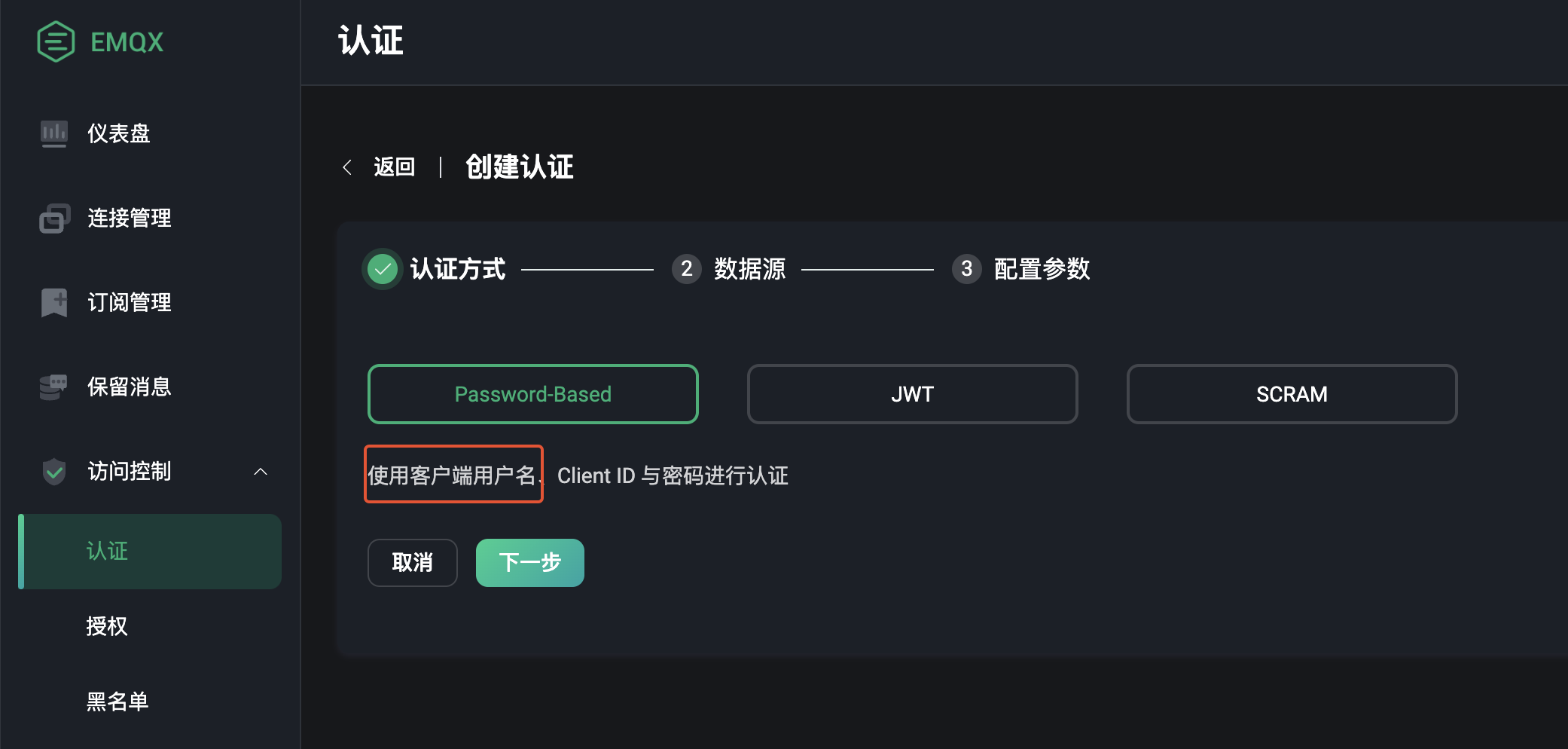
选择使用Built-in Database(内置的数据库)
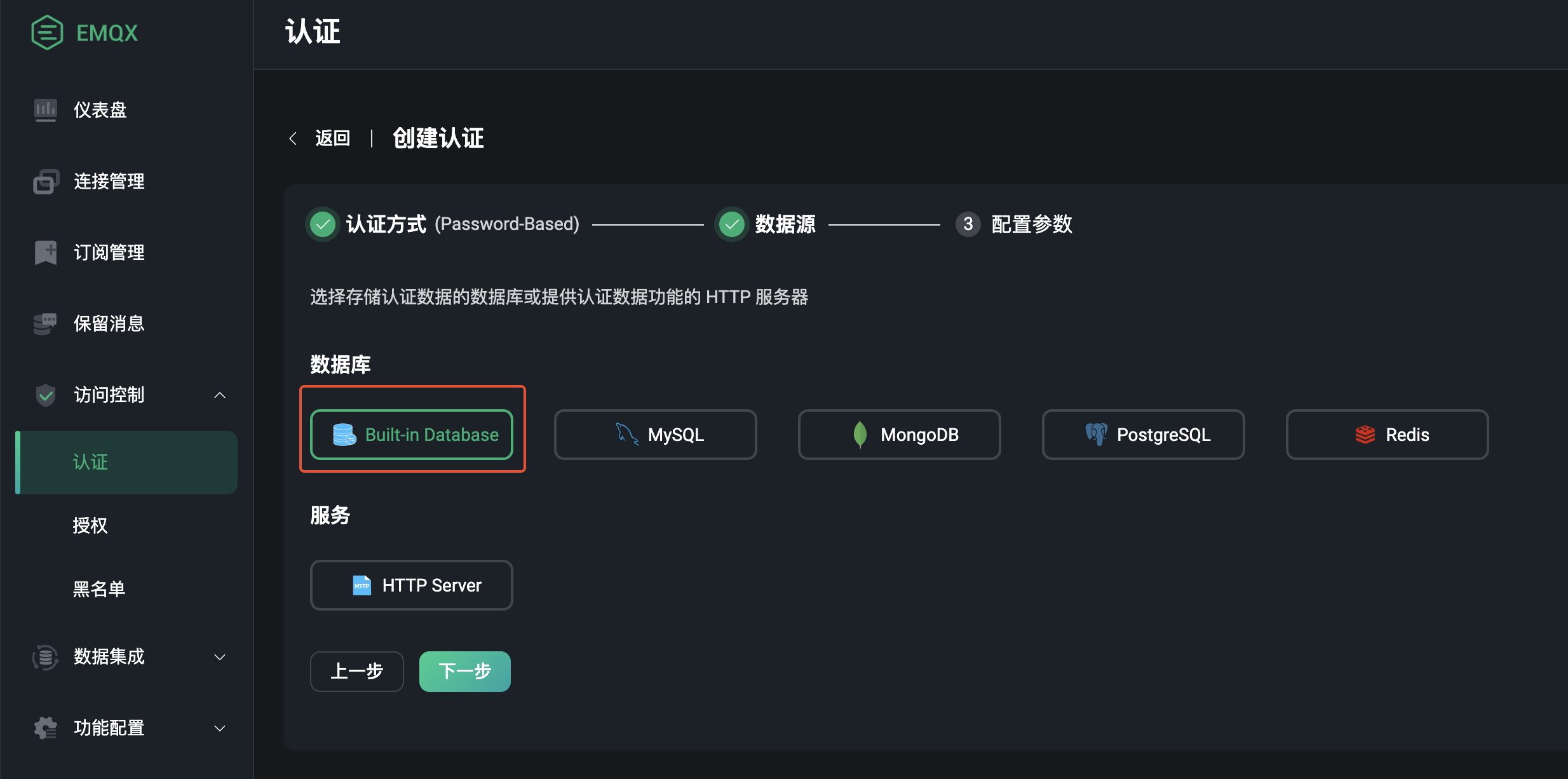
选用用户名方式、加密方式、hash加盐是前缀还是后缀,默认即可
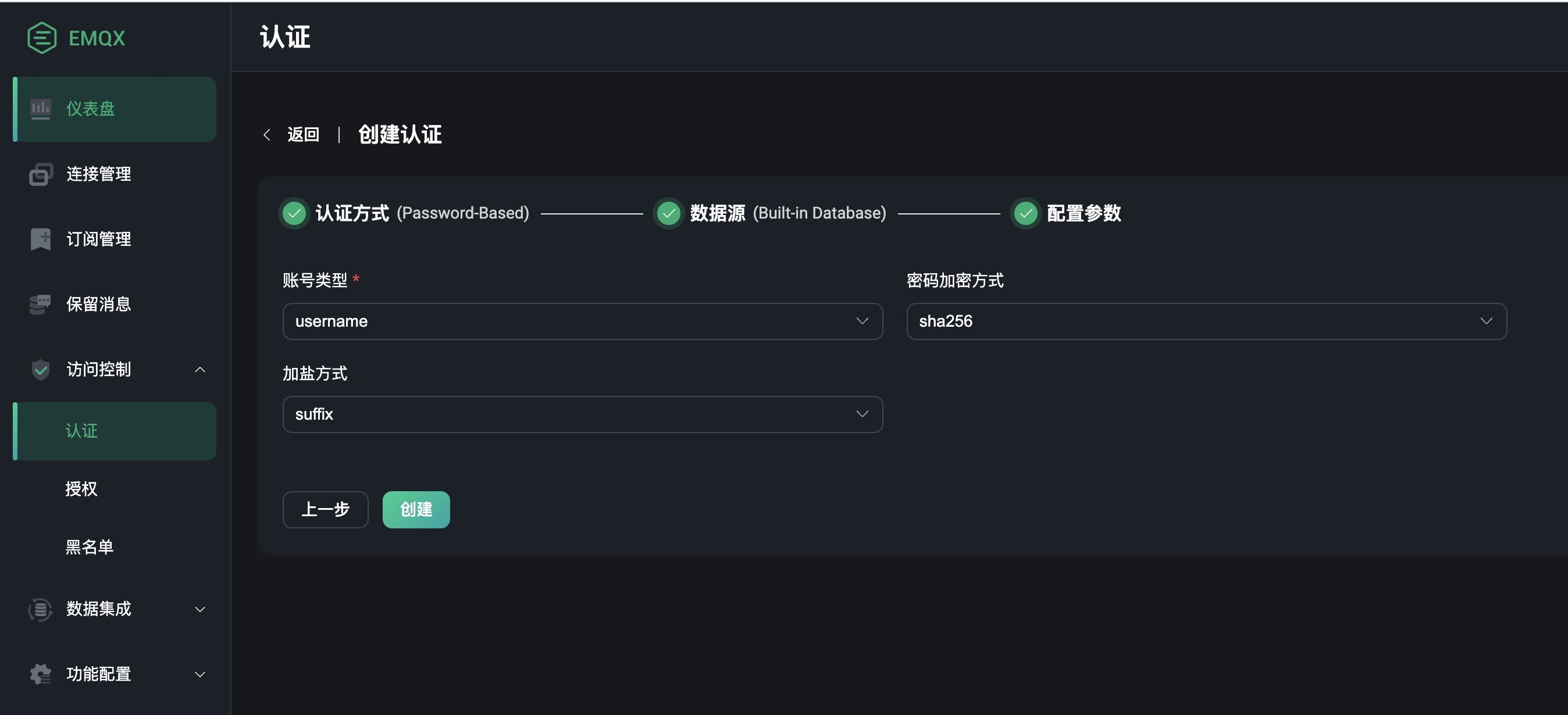
用户管理
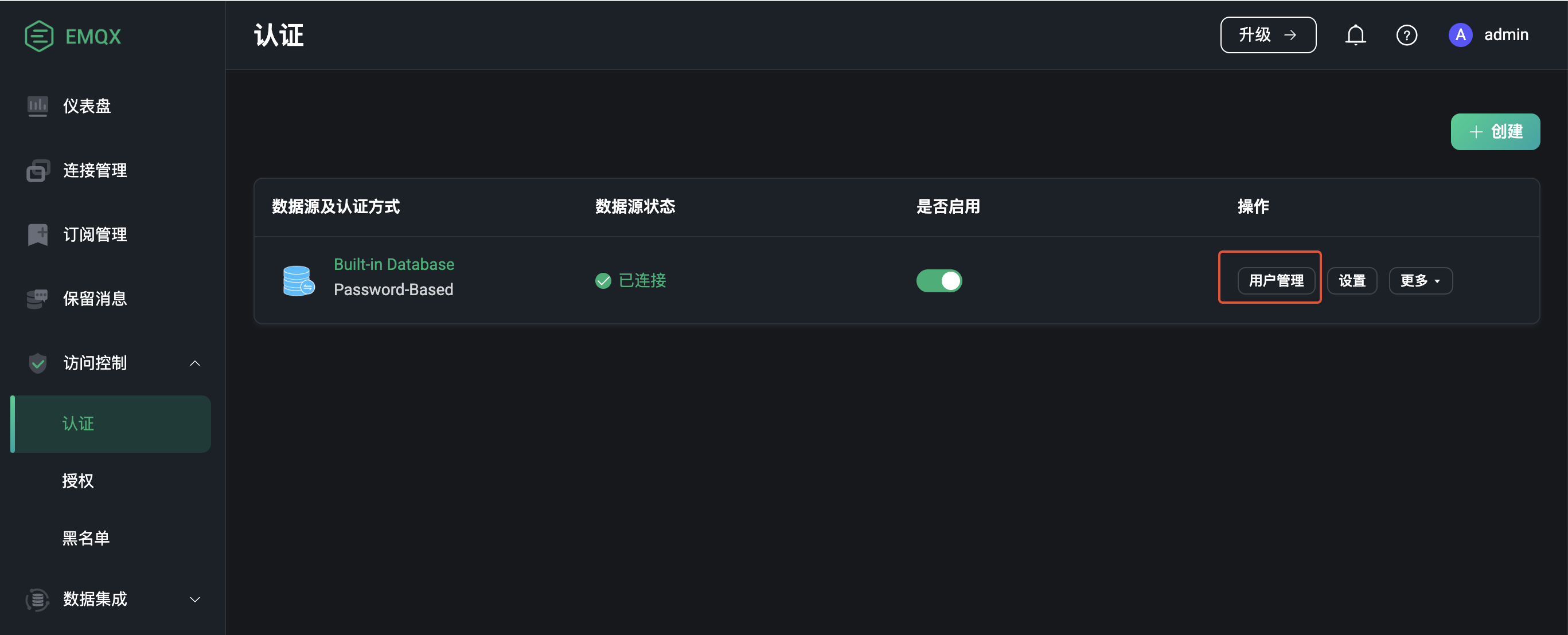
添加用户
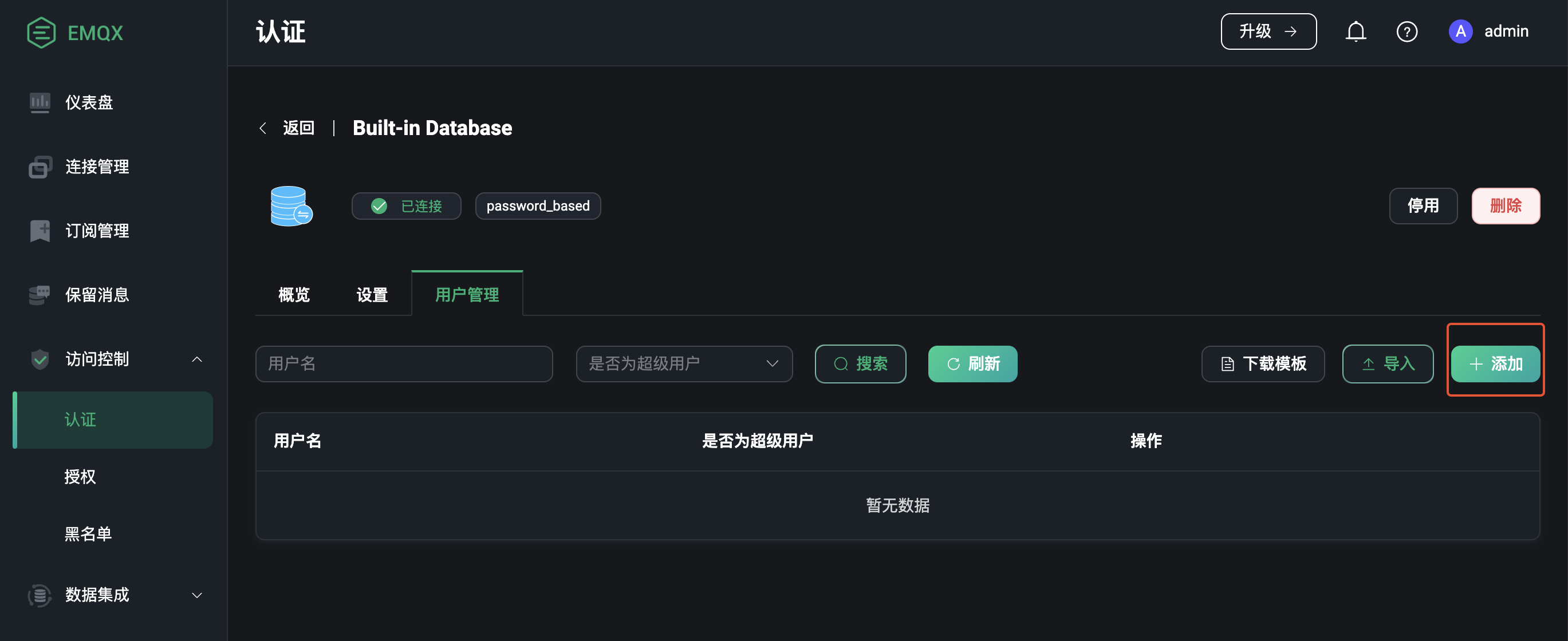
配置文件
配置文件路径:/etc/emqx/emqx.conf
配置文件内容,参考:配置文件
EMQX的配置文件格式是 HOCON (opens new window)。 HOCON(Human-Optimized Config Object Notation)是一个JSON的超集,非常适用于易于人类读写的配置数据存储。
配置文件内容
## NOTE:
## Configs in this file might be overridden by:
## 1. Environment variables which start with 'EMQX_' prefix
## 2. File $EMQX_NODE__DATA_DIR/configs/cluster-override.conf
## 3. File $EMQX_NODE__DATA_DIR/configs/local-override.conf
##
## The *-override.conf files are overwritten at runtime when changes
## are made from EMQX dashboard UI, management HTTP API, or CLI.
## All configuration details can be found in emqx.conf.example
node {
name = "emqx@127.0.0.1"
cookie = "emqxsecretcookie"
data_dir = "/var/lib/emqx"
}
log {
file_handlers.default {
level = warning
file = "/var/log/emqx/emqx.log"
}
}
cluster {
name = emqxcl
discovery_strategy = manual
}
listeners.tcp.default {
bind = "0.0.0.0:1883"
max_connections = 1024000
}
listeners.ssl.default {
bind = "0.0.0.0:8883"
max_connections = 512000
ssl_options {
keyfile = "/etc/emqx/certs/key.pem"
certfile = "/etc/emqx/certs/cert.pem"
cacertfile = "/etc/emqx/certs/cacert.pem"
}
}
listeners.ws.default {
bind = "0.0.0.0:8083"
max_connections = 1024000
websocket.mqtt_path = "/mqtt"
}
listeners.wss.default {
bind = "0.0.0.0:8084"
max_connections = 512000
websocket.mqtt_path = "/mqtt"
ssl_options {
keyfile = "/etc/emqx/certs/key.pem"
certfile = "/etc/emqx/certs/cert.pem"
cacertfile = "/etc/emqx/certs/cacert.pem"
}
}
# listeners.quic.default {
# enabled = true
# bind = "0.0.0.0:14567"
# max_connections = 1024000
# keyfile = "/etc/emqx/certs/key.pem"
# certfile = "/etc/emqx/certs/cert.pem"
#}
dashboard {
listeners.http {
bind = 18083
}
default_username = "admin"
default_password = "public"
}
authorization {
deny_action = ignore
no_match = allow
sources = [
{
type = file
enable = true
# This file is immutable to EMQX.
# Once new rules are created from dashboard UI or HTTP API,
# the file 'data/authz/acl.conf' is used instead of this one
path = "/etc/emqx/acl.conf"
}
]
}
配置文件内容了解
不同连接方式和端口
listeners.tcp.default {
bind = "0.0.0.0:1883"
max_connections = 1024000
}
listeners.ssl.default {
bind = "0.0.0.0:8883"
max_connections = 512000
ssl_options {
keyfile = "/etc/emqx/certs/key.pem"
certfile = "/etc/emqx/certs/cert.pem"
cacertfile = "/etc/emqx/certs/cacert.pem"
}
}
listeners.ws.default {
bind = "0.0.0.0:8083"
max_connections = 1024000
websocket.mqtt_path = "/mqtt"
}
listeners.wss.default {
bind = "0.0.0.0:8084"
max_connections = 512000
websocket.mqtt_path = "/mqtt"
ssl_options {
keyfile = "/etc/emqx/certs/key.pem"
certfile = "/etc/emqx/certs/cert.pem"
cacertfile = "/etc/emqx/certs/cacert.pem"
}
}
Web 页面大屏(指示板)
dashboard {
listeners.http {
bind = 18083
}
default_username = "admin"
default_password = "public"
}




 浙公网安备 33010602011771号
浙公网安备 33010602011771号